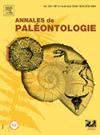超越东南亚更新世动物群古环境数据的限制:为更进一步而进行的严格审查
IF 0.7
4区 地球科学
Q4 PALEONTOLOGY
引用次数: 0
摘要
关于东南亚的更新世,劳伦斯-海尼(Lawrence Haeney)于 1991 年根据一些花粉记录提出的 "热带草原走廊 "假说引起了人们一定程度的热情,许多人试图以此来证实或反驳在末次冰川最盛时期森林覆盖率的显著下降(取决于所考虑的分类群)。为验证这一假说而开展的工作使用了多种工具,特别是古生物学工具,但在我们看来,由于可用的可靠数据极少,这些工具的结果似乎被大大美化了。事实上,很明显,该假说涉及的地理区域今天基本上无法进入,位于南中国海 120 米深处,而且所考虑的动物群落仍不完善,无法对该假说进行检验。我们对迄今为止开展的主要工作进行了总结,并对过去几十年发表的文章进行了批判性评估。所考虑的化石系列(主要是哺乳动物)似乎既没有很好的年代学设定,也没有从岩石学的角度进行很好的界定,这主要是因为它们所依据的参考文献并不令人满意,这些参考文献本身就年代不清或依据的是不同动物群的混合物。这些缺陷也使最近提出的基于同位素分析的某些类群饮食灵活性和栖息地(生态位)变化的新的诱人假说受到质疑。我们主张进行系统的精细发掘,既要考虑到遗址的岩石学,又要表明已经取得了重大进展。本文章由计算机程序翻译,如有差异,请以英文原文为准。
Transgressing the limits of palaeoenvironmental data for Southeast Asian Pleistocene faunal assemblages: A critical review to go further
For the Pleistocene of South-east Asia, the ‘savannah corridor’ hypothesis put forward by Lawrence Heaney in 1991 on the basis of a few pollen records rightly aroused a certain amount of enthusiasm and was the source of many attempts to confirm or refute a significant regression in forest cover, depending on the taxa considered, during the Last Glacial Maximum. The work carried out to verify this hypothesis used a number of tools, including palaeontology, the results of which seem to us to have been greatly embellished given the paucity of reliable data available. Indeed, it is clear that the hypothesis concerns a geographical area that is largely inaccessible today, located at a depth of 120 meters in the South China Sea, and that the faunal assemblages taken into account remain imperfectly defined to allow such a hypothesis to be tested. We provide a summary of the main work carried out to date and a critical assessment of the articles published over the last few decades. It emerges that the fossil series considered (essentially mammals) are neither well chronologically set nor well defined from a taphonomic point of view, notably because they are based on unsatisfactory references, which are themselves poorly dated or based on mixtures of different faunas. These shortcomings also call into question the renewed and attractive hypothesis of the flexibility of the diet and change of habitat (ecological niche) of certain taxa, based on isotopic analyses, as recently proposed. We advocate the implementation of systematic fine excavations that take into account the taphonomy of the sites, but also show that progress has been made to go further.
求助全文
通过发布文献求助,成功后即可免费获取论文全文。
去求助
来源期刊

Annales de Paleontologie
地学-古生物学
CiteScore
1.70
自引率
10.00%
发文量
8
审稿时长
>12 weeks
期刊介绍:
Créées par Marcellin Boule en 1905, les Annales de Paléontologie publient 4 numéros par an traitant des fossiles animaux et végétaux, dans tous les domaines de la paléontologie incluant :
-La Paléoanatomie-
La Paléohistologie-
La Morphologie fonctionnelle-
La Systématique-
L''Évolution-
La Paléoécologie
... et toute les contributions susceptibles d''améliorer la compréhension des organismes et des environnements éteints.
 求助内容:
求助内容: 应助结果提醒方式:
应助结果提醒方式:


